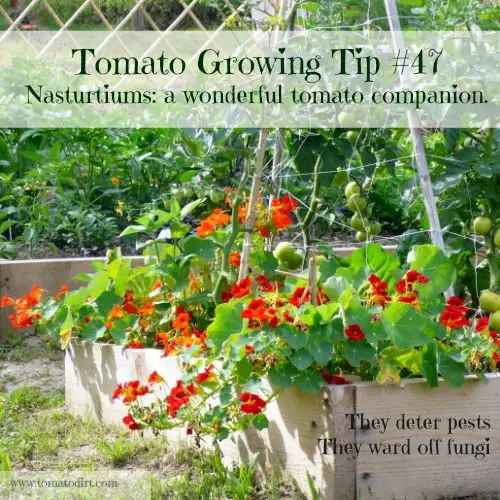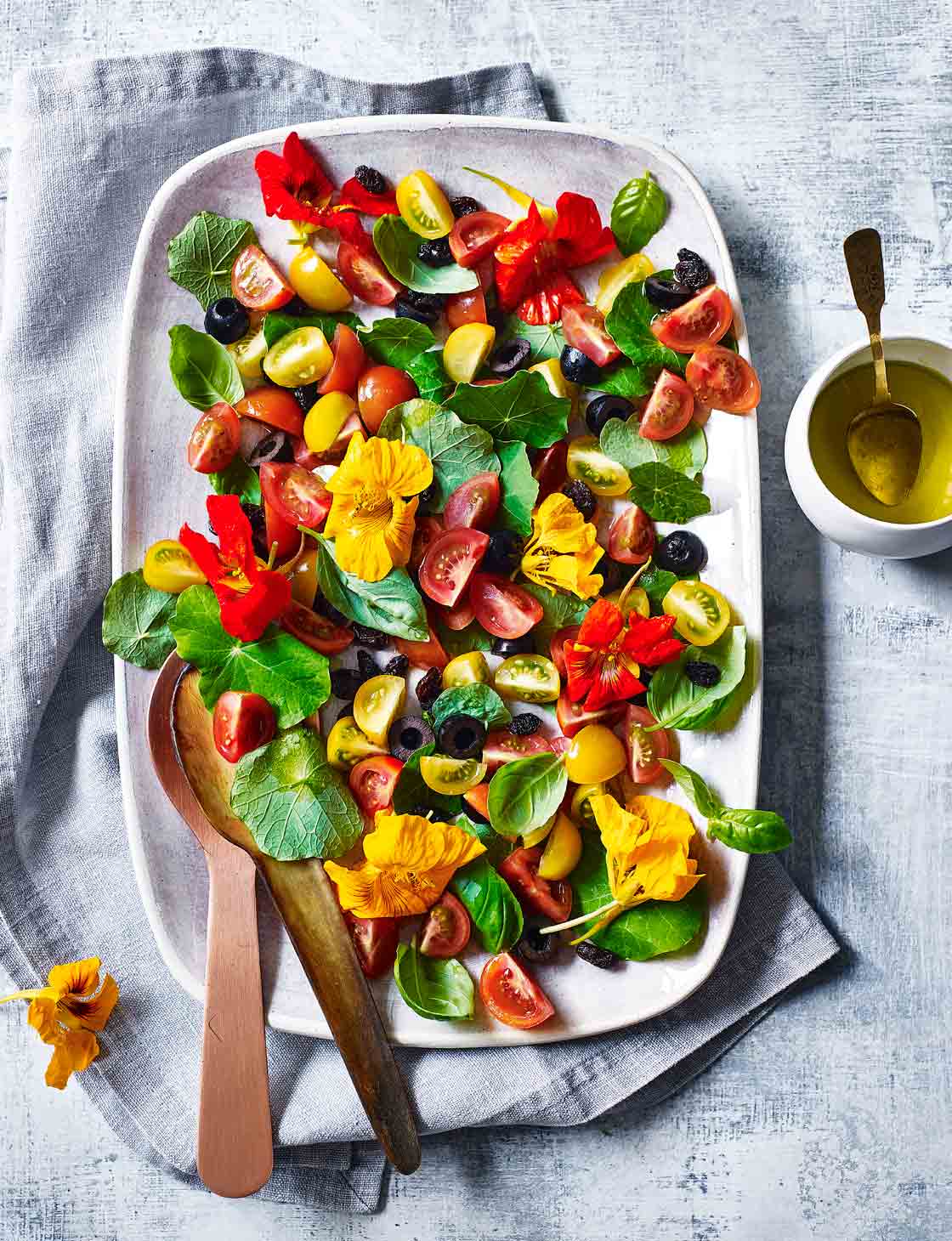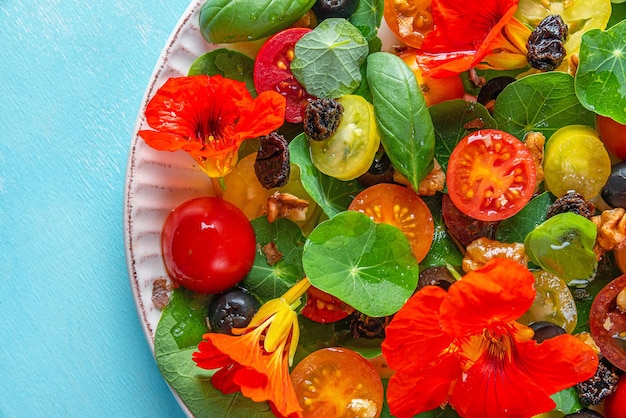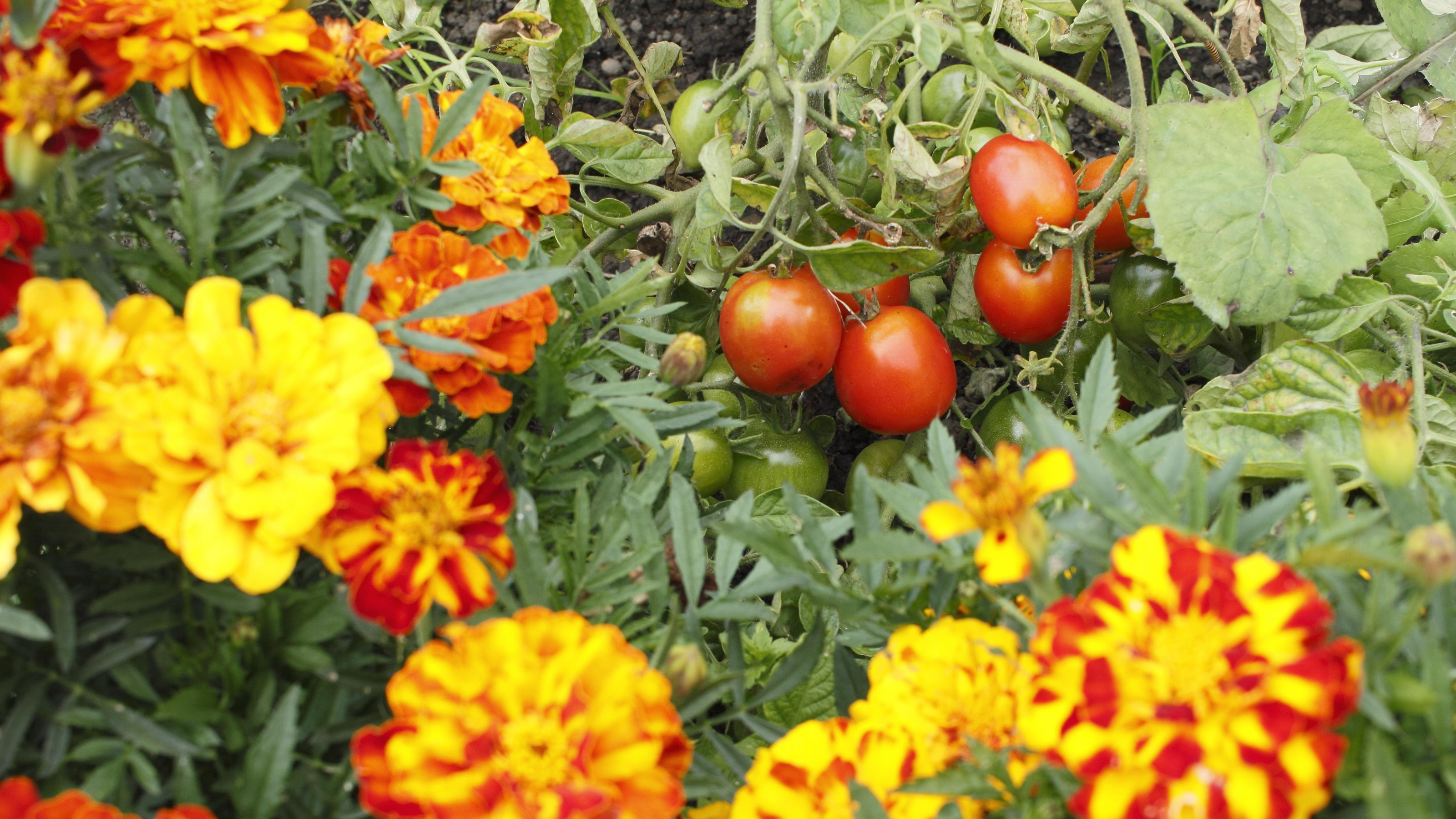The Perfect Pair: Nasturtiums And Tomatoes
The Perfect Pair: Nasturtiums and Tomatoes
Nasturtiums and tomatoes are a match made in heaven. These two plants have a lot to offer each other, both in terms of pest control and flavor enhancement.
Nasturtiums as a Pest Repellant
Nasturtiums are a natural pest repellent. Their leaves and flowers contain a chemical called nasturtiumin, which has a peppery taste that deters insects. Aphids, whiteflies, and spider mites are all repelled by nasturtiums.
In addition to deterring pests, nasturtiums can also attract beneficial insects. These include ladybugs, hoverflies, and lacewings, which prey on pests. So, by planting nasturtiums, you can help to create a more balanced ecosystem in your garden.
Tomatoes as a Flavor Enhancer
Tomatoes and nasturtiums also complement each other in terms of flavor. The peppery taste of nasturtiums can help to enhance the sweetness of tomatoes. You can add nasturtium leaves and flowers to salads, sandwiches, and other dishes. The flowers are also edible and can be pickled or used in stir-fries.
How to Plant Nasturtiums and Tomatoes Together
Nasturtiums and tomatoes can be planted together in the same garden bed. However, it's important to space them out so that they have enough room to grow. Nasturtiums can spread quite quickly, so you may want to plant them in a separate bed or container.
When planting nasturtiums and tomatoes together, it's also important to consider their sun and water requirements. Both plants need full sun, but tomatoes need more water than nasturtiums. So, you'll need to make sure that your garden bed or container has good drainage.
Conclusion
Nasturtiums and tomatoes are a great combination for any garden. They help to deter pests, enhance flavor, and add beauty to your garden. So, if you're looking for a way to improve your garden, consider planting nasturtiums and tomatoes together.
Nasturtiums and tomatoes are a great combination to plant together in your garden. Nasturtiums help to deter pests from tomatoes, and they also add a splash of color to the garden. The bright orange flowers of nasturtiums are irresistible to aphids and whiteflies, which are two of the most common pests that attack tomatoes. By planting nasturtiums near your tomatoes, you can help to keep these pests away and protect your tomato plants.
In addition to deterring pests, nasturtiums also attract pollinators, such as bees and butterflies. These pollinators help to pollinate your tomato plants, which can lead to a better harvest. Nasturtiums are also edible, and their leaves and flowers can be used in salads, sandwiches, and other dishes.
If you're interested in learning more about nasturtiums and tomatoes, I recommend visiting Gardenia Inspiration. This website has a wealth of information about these two plants, including how to plant them, how to care for them, and how to use them in your garden.
FAQ of nasturtiums and tomatoes
Q: Can I plant nasturtiums and tomatoes together?
A: Yes, nasturtiums and tomatoes can be planted together. In fact, they can be beneficial to each other's growth. Nasturtiums attract beneficial insects, which can help to control pests that damage tomatoes. Additionally, nasturtiums' roots release chemicals that help to suppress the growth of harmful soil-borne diseases.
Q: What are some tips for growing nasturtiums?
A: Nasturtiums are relatively easy to grow. They prefer full sun and well-drained soil. They can be planted from seed or from transplants. When planting from seed, sow the seeds 1/2 inch deep and 2 inches apart. When planting transplants, space them 12 inches apart.
Q: What are some pests and diseases that can affect nasturtiums?
A: Nasturtiums are susceptible to a few pests and diseases, including aphids, spider mites, and powdery mildew. Aphids can be controlled with insecticidal soap or neem oil. Spider mites can be controlled by increasing humidity or using an insecticidal soap. Powdery mildew can be prevented by providing good air circulation and avoiding overhead watering.
Q: How can I use nasturtiums in my garden?
A: Nasturtiums can be used in a variety of ways in the garden. They can be grown as ornamental plants, as edible flowers, or as a companion plant for tomatoes. Nasturtium flowers are edible and can be used in salads, sandwiches, or as a garnish. The leaves of nasturtiums can also be eaten and have a peppery flavor.
Q: What are some other interesting facts about nasturtiums?
A: Nasturtiums are related to the mustard family. The leaves of nasturtiums contain mustard oil, which gives them their peppery flavor. Nasturtiums are also a good source of vitamins A and C.
Image of nasturtiums and tomatoes
5 different images of "nasturtiums and tomatoes" from Pinterest:
- Image 1: A pot of nasturtiums and tomatoes growing in a sunny garden. The nasturtiums are in shades of orange, yellow, and red, and the tomatoes are a deep red.

- Image 2: A plate of salad with nasturtium leaves, tomatoes, and other vegetables. The nasturtium leaves have a peppery flavor that complements the sweetness of the tomatoes.

- Image 3: A bouquet of nasturtiums and tomatoes. The nasturtiums are arranged in a vase with the tomatoes nestled among them. The flowers and vegetables make a beautiful and colorful display.

- Image 4: A close-up of a nasturtium flower and tomato. The nasturtium flower is a bright orange color with yellow petals. The tomato is a deep red color with a few green leaves still attached.

- Image 5: A row of nasturtiums and tomatoes growing in a garden. The nasturtiums are in full bloom, and the tomatoes are starting to turn red.

Post a Comment for "The Perfect Pair: Nasturtiums And Tomatoes"